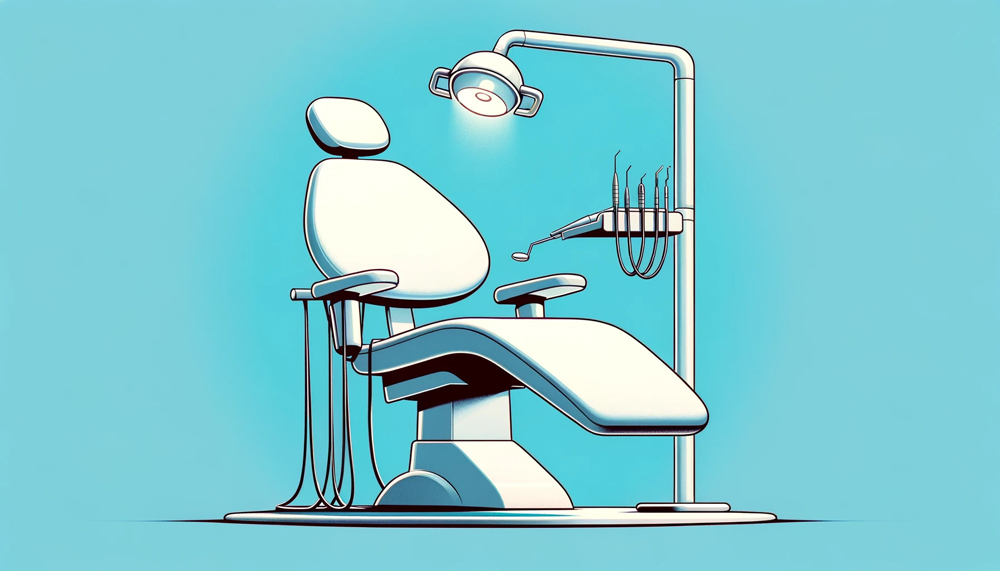In the realm of dentistry, the dental chair is not just a piece of furniture but a pivotal tool in ensuring patient comfort and optimizing the dentist’s working posture.
An appropriately adjusted dental chair can significantly impact the success of dental procedures and the overall patient experience.
This comprehensive guide on how to adjust your dental chair for optimal use delves into the nuances of dental chair adjustment, aiming to enhance both patient satisfaction and the ergonomic health of dental professionals.
Understanding Key Features of Dental Chairs

Comfort and Stability
A fundamental aspect of any dental chair is its ability to provide comfort and stability.
A well-cushioned chair supports the patient’s body, while its stability ensures safety during various dental procedures.
It’s imperative to choose a chair that adapts to different body types and sizes, offering personalized comfort to each patient.
Technological Advancements
Modern dental chairs come equipped with various technological features that boost the dentist’s efficiency.
Programmable memory settings for seat positions, control panels for easy adjustment, and foot control joysticks are standard in many contemporary models.
These features not only save time but also allow for precise adjustments to cater to individual patient needs.
Ergonomics and Height Adjustment
The height of the dental chair is crucial in maintaining the dentist’s ergonomic health.
Chairs should be adjustable to a range that allows the dentist to maintain a neutral posture, avoiding excessive bending or reaching.
This not only enhances the dentist’s comfort during procedures but also prevents long-term musculoskeletal issues.
Armrests and Swivel Features
Sling-Style or Low-Profile Armrests
These armrests facilitate dentist movement, particularly in the common 8 to 10 o’clock working positions, preventing knee contact with the chair.
This design aspect significantly contributes to the dentist’s ease of movement and access to the patient.
Swivel Feature
A swivel feature is invaluable in dental chairs, especially in compact operatory spaces.
It allows the dentist to move around the patient’s head without repositioning the entire chair, thus providing better access and reducing physical strain.
Chair Design and Room Configuration

Chair Length and Operatory Space
The length of the dental chair should be compatible with the size of the operatory room.
Sufficient space between the chair’s headrest and the counter is necessary to ensure ease of movement for the dental team.
Chairs with a traverse feature can be particularly beneficial in adjusting this distance efficiently.
Room Design Considerations
The design of the dental room, including its size and layout, plays a significant role in the selection and positioning of the dental chair.
A swivel feature is particularly advantageous in smaller rooms, allowing the chair to pivot and utilize the best available space (ASIDental).
Operator Seating and Positioning
Proper adjustment of the operator stool is essential for maintaining an ergonomic posture. The stool should allow for a slight curve in the lower back and facilitate pivoting from the hips.
Adjustments in the height and tilt of the seat pan are crucial for ensuring that the operator’s thighs slope slightly downward, with feet flat on the floor.
Also read Types of Dental Chairs
Specialty Considerations in Dental Chair Design

Headrest and Backrest Design
A double-articulating headrest and a thin, narrow backrest are vital for optimal operator access and patient comfort.
These features allow for closer proximity to the patient and prevent reaching or strained movements.
Adaptable Features
Dental chairs should be versatile to cater to various patient needs, including accommodating wheelchair users.
This adaptability ensures that all patients receive care in the most comfortable and efficient manner possible.
Maintenance and Upgrading Dental Chairs
While dental chairs are built for longevity, they do require maintenance and occasional upgrades.
Options like re-upholstering or using overlays like the MediPosture ICORE Dental Chair Overlay System can revitalize an older chair, enhancing comfort and appearance.
Conclusion
An optimally adjusted dental chair is a cornerstone of a successful dental practice. It not only ensures patient comfort but also safeguards the dentist’s physical well-being.
By following these guidelines, dental professionals can significantly enhance their practice’s efficiency and patient care.
FAQs
-
How do I ensure my dental chair is at the right height for a procedure?
Adjust the chair so your arms maintain a neutral posture, avoiding excessive bending or reaching. The patient should be at a height that allows you to operate comfortably.
-
What features should I consider when selecting a dental chair?
Look for chairs with comfort and stability, technological features like programmable settings, and ergonomic design like low-profile armrests and a swivel feature.
-
Can dental chair adjustments improve patient comfort?
Yes, proper adjustments like the chair height, backrest angle, and headrest position significantly enhance patient comfort during dental procedures.
-
What are the ergonomic benefits of a properly adjusted dental chair for dentists?
A well-adjusted chair reduces the risk of musculoskeletal issues for dentists by allowing a more natural, comfortable posture during procedures.
-
How can I upgrade my existing dental chair for better performance?
Consider options like re-upholstering or using ergonomic overlays like the MediPosture ICORE system to enhance comfort and extend the life of your chair.


